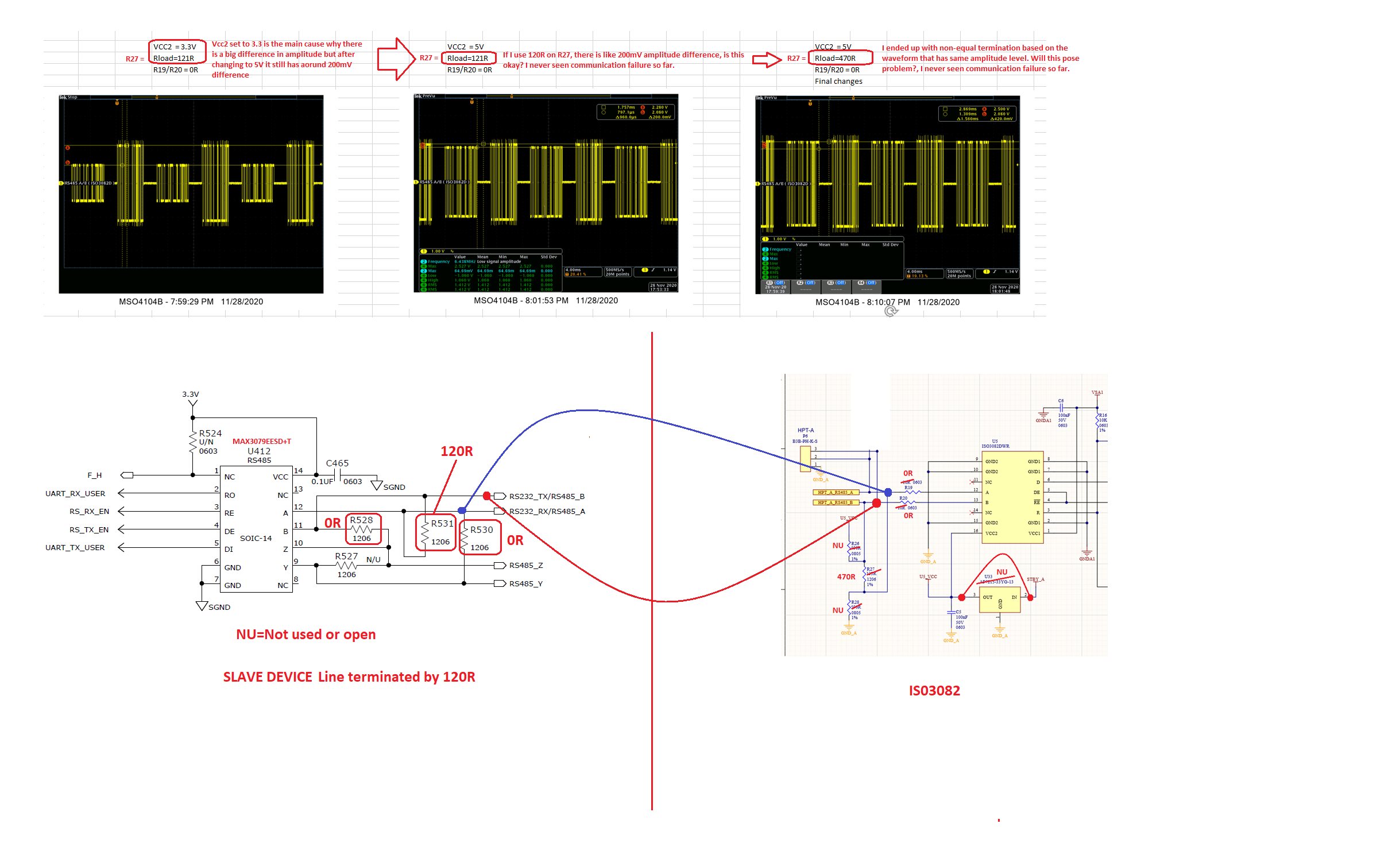Other Parts Discussed in Thread: ISO1500, ISO1410
Hello,
Can you advise if below signal from RS485 A/B pins ( 12 and13 ) using ISO3082 is normal. Said ISO3082 part is already communicating with my slave device but I just noticed that the waveform does not have thesame amplitude.
Is this normal and is there any concern on this one? If this is a concern, any idea how to fix this?
Thanks,
Norman



